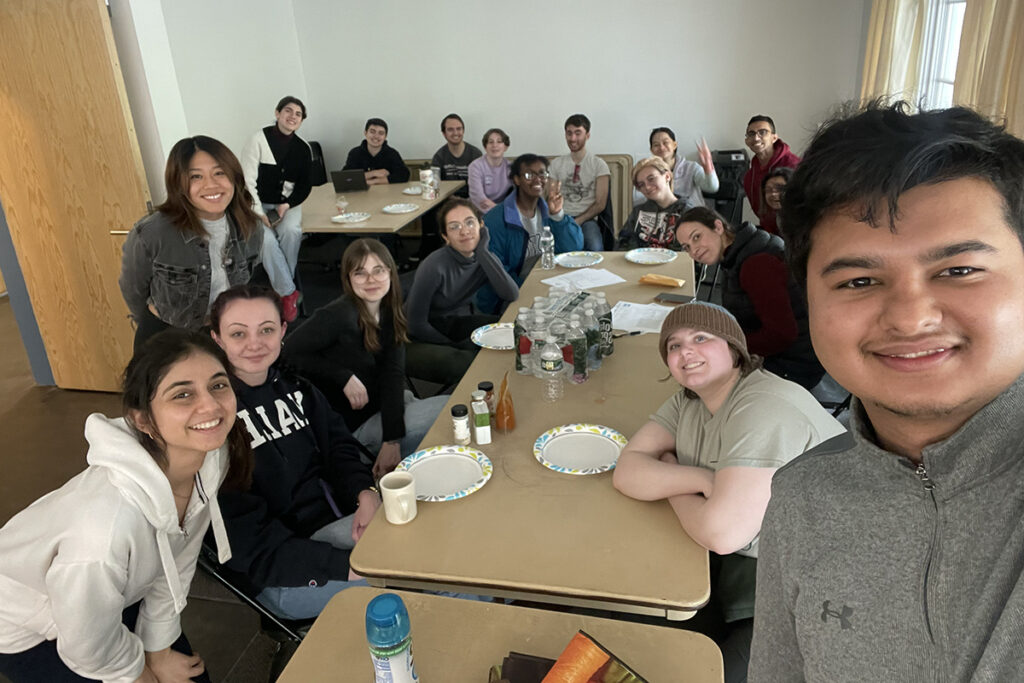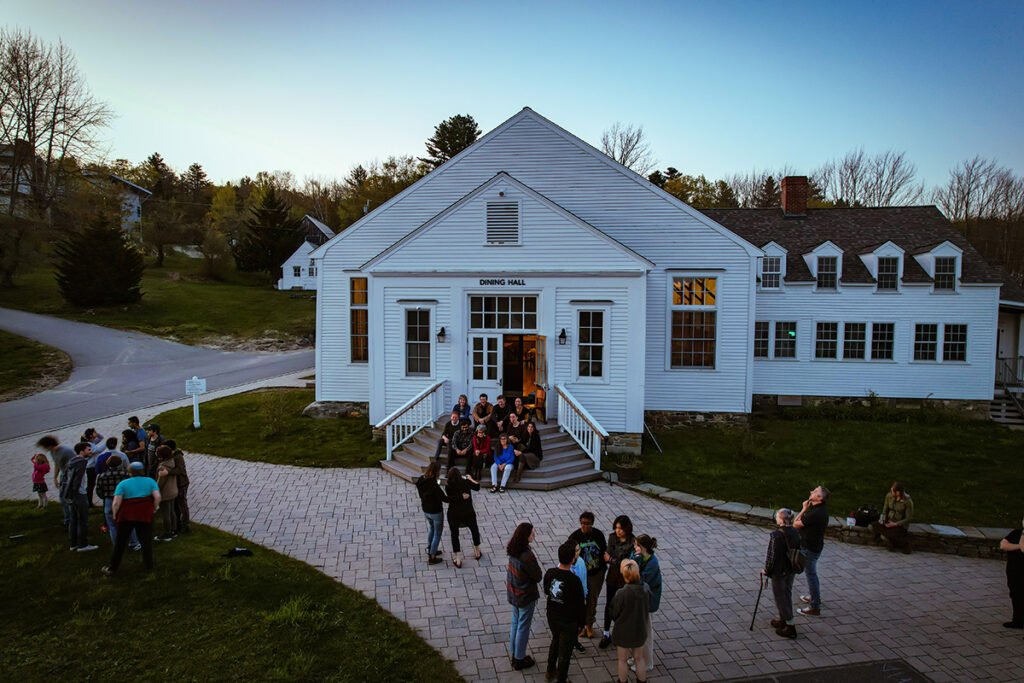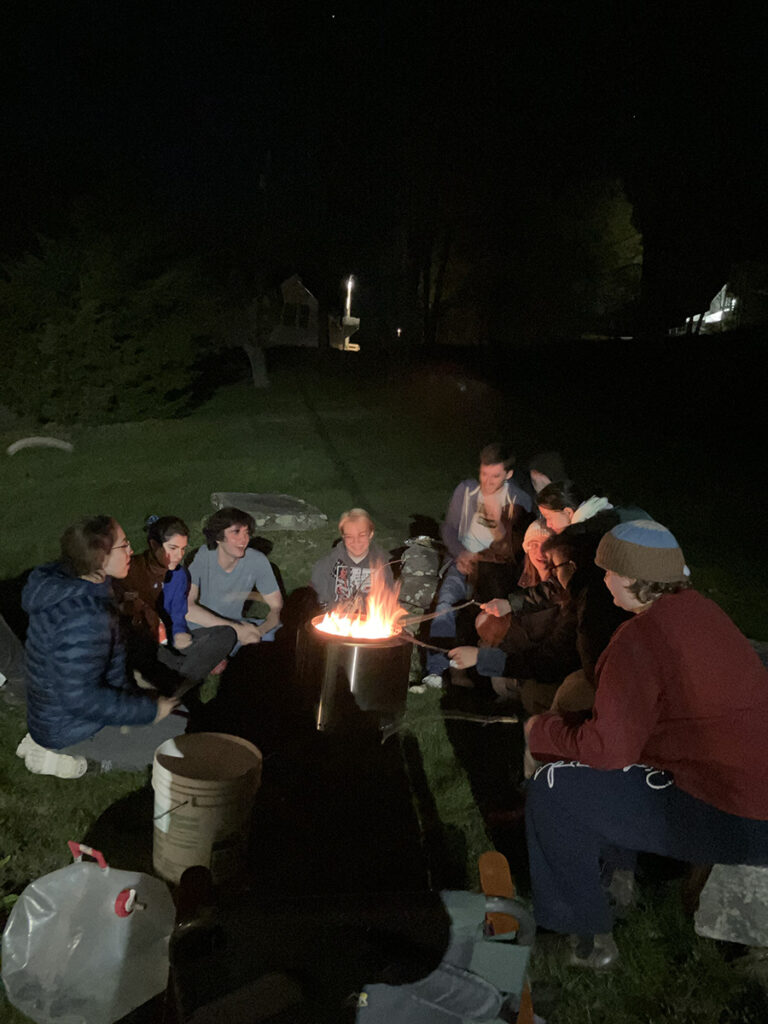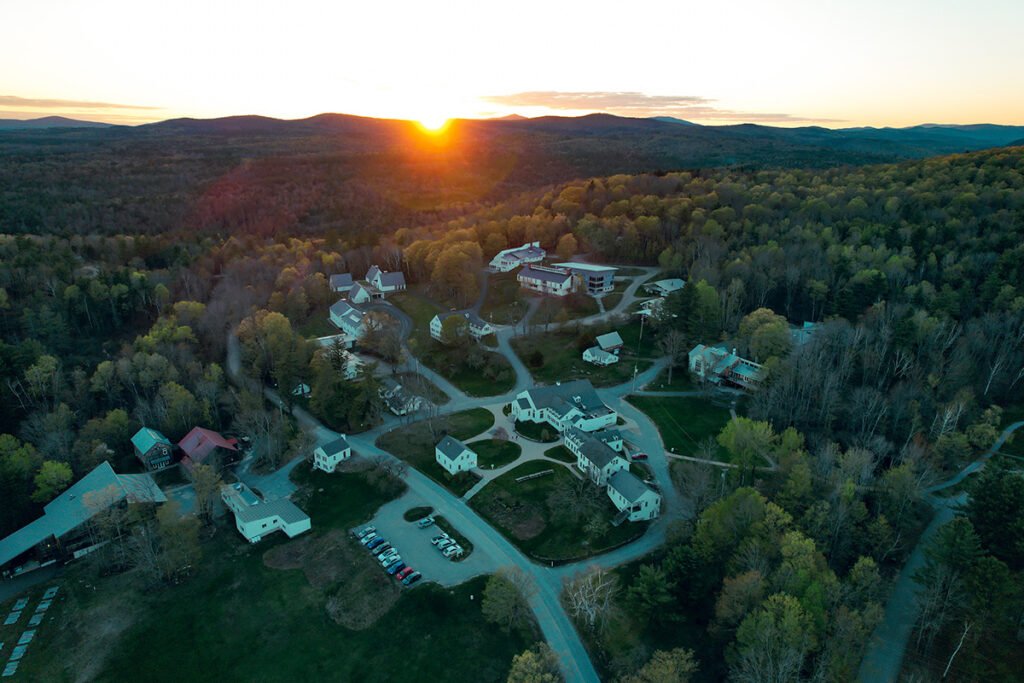For Marlboro Institute, Bridges Program Creates Community

Pranit Chand’s introduction to life as a Marlboro College student began four and a half years ago on a multi-day bicycle trip across Southern Vermont. He and eight or nine classmates camped, farmed, and, somehow, ended up at a posh hotel party at the invitation of the hotel’s owner.
The program, called Bridges, operated in lieu of a more orthodox orientation, and was a Marlboro tradition – one that students and faculty in Emerson’s Marlboro Institute of Liberal Arts and Interdisciplinary Studies are working to cultivate anew at Emerson.
“It was a magical experience,” said Chand ’23, who graduated this May from a self-designed Interdisciplinary Studies (IDS) program in blockchain and the digital creative economy. “That’s exactly what Bridges is, and the friends I made there are still best friends.”
Last November, and again in early May, students in the Marlboro Institute’s IDS program spent a weekend at Potash Hill in Vermont, site of Marlboro’s former campus, now owned and administered by the organization behind the Marlboro Music Festival. They were joined by current and former Marlboro faculty, as well as Marlboro College alumni.
The original Bridges was intended to “bridge” the gap between high school and college through expeditions and programs designed by upperclassmen for incoming students, who could select one based on their own interests. It was a fun and immersive entrée into Marlboro’s culture of self-directed inquiry, teamwork, and shared governance. It also was an intense bonding experience, something Chand, who planned last fall’s trip, said is critical for independent study.
“This designing your own major stuff, it’s not easy,” he said. “That’s our intention [with Bridges], if you start early on forming this community, you start understand what this major is, you find out why designing it is such a big deal.”

Connecting Past and Present
This year’s Bridges trips didn’t venture as far afield as the original versions, and there were no serendipitous parties in fancy hotels. They stayed in and around Potash Hill, hiking, cooking and sharing meals together, visiting a farmer’s market in nearby Brattleboro, playing soccer, and learning about each other and what makes the Marlboro culture special.
Importantly, the Bridges program still is organized by students.
“[Marlboro] is the community, it’s not just an educational institution,” said Marlboro Institute Associate Professor Todd Smith, who, along with Associate Professor Jaime Tanner, participated in the program and helped the students with logistics for the trip. “It also is fostering student initiative, so the students feel empowered, [and] we’re excited to have [had] two students who didn’t go to Marlboro College [Jillian Hetherman ’25 and Fiona Brown ’26, planning the May trip].”
Juwaria Jama ’26, an IDS student planning to focus on environmental studies and international affairs, went on both the fall and spring trips, and said during the May excursion, in particular, she really was “able to get it.”
Everyone in the Marlboro community has a tight connection, Jama said. Faculty know each other well, students and faculty have close relationships, alumni who returned to Potash Hill remember people by name.
“It felt so community oriented, all the decisions were being made as a community, they talked about the town halls they did every week [at Marlboro College],” she said. “It kind of blew my mind knowing that community exists in that form, knowing that people can actually make that happen. Seeing that trying to happen here at Emerson … makes me really happy.”
Ellye Sevier ’25, who also attended both the November and May Bridges trips, said last year she became friends with a lot of original Marlboro College students, and seeing the place where the Marlboro ethos began “felt really right.”
Sevier entered Emerson as a Journalism major, then transferred to Writing, Literature and Publishing before realizing that what she was looking for combined elements of both.

Now an IDS major studying journalism, creative writing, and publishing, Sevier said that while she feels very connected to Emerson College as a whole, she has a “special affinity” for the Marlboro community.
“It’s a lot tighter knit than the [wider] Emerson community,” she said. “We have our varied interests, but we’re all drawn together by this specific drive.”
A Bridges Suspension
That “special affinity” was a little slow in building in the early days of the partnership. Emerson and Marlboro officially joined forces in July 2020, in the throes of the pandemic. Marlboro students and faculty were introduced to an Emerson campus that held many classes online, demanded rigorous social distancing, and left few, if any, opportunities for the kind of casual contact that leads to a sense of belonging.
Once the dangers of COVID began to abate, however, and campus life started returning to normal, Tanner said she and her colleagues in the Institute were able to implement a number of traditions, old and new, designed to build community.
In the fall, the Institute schedules major seminars for various class years to come together. A number of activities throughout the year – making spring rolls, dinner with faculty, a student art show – help foster community, as does an annual fall photo of everyone in the Institute. Marlboro Institute seniors had their own graduation ceremony, in addition to Commencement, with a student speaker, a faculty speaker, and presentations of capstones.
But the Bridges program offers a unique and intensive way to become part of the Marlboro community.
Strong Foundations
One of the highlights of the spring trip was a dinner held in the Potash Hill dining hall, said Tanner. Around a meal catered by a local coop and featuring some potluck dishes, students and current faculty gathered with alumni and former community members, sharing stories and toasting each other and Marlboro. Students who joined the Marlboro Institute post-partnership spoke about their experiences and how they grew to feel a part of something really special, she said.
Tanner, who was on the committee that laid the groundwork for the Emerson/Marlboro partnership, said throughout that process, there were a lot of differing opinions about how the Institute would work. But faculty in particular, as well as students, were confident that while they couldn’t just transplant Marlboro College in Boston, they could bring the most important elements and make them part of the fabric of the new Marlboro Institute.

That Bridges dinner, Tanner said, felt really “validating.”
“We are actually doing this, the thing we were hoping to build is coming to be,” Tanner said, “and it was built, not just by the faculty who came, but the students who came, they’re passing it on.”
For those students like Chand, who were the last “Potash Hill veterans” to graduate, the Bridges trip was a fitting bookend to their Marlboro education.
“For us, it was nostalgic,” he said. “It was good to be back, but for the new students, they finally understood what the experience was.
“We went on a hike while we were there, and there was a stream we couldn’t cross, so we came together and built a bridge and crossed it together. That was, in my experience, prime Marlboro – working together and make sure we crossed the bridge, literally, together.”
Categories